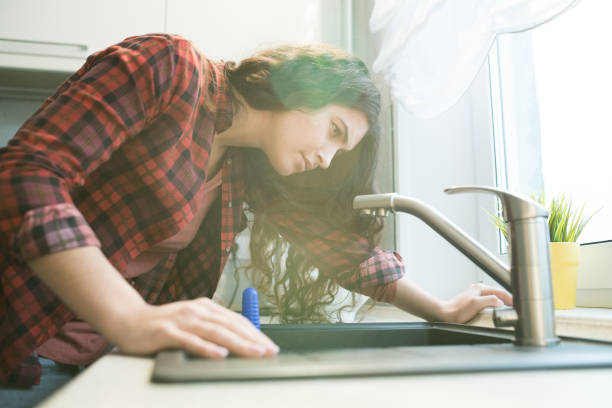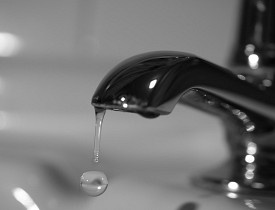Factors Why It's Critical to Repair a Broken Faucet
Factors Why It's Critical to Repair a Broken Faucet
Blog Article
What are your thoughts and feelings about 4 Common Reasons for a Leaky Faucet?

Dripping taps may look like a small aggravation, however their effect exceeds simply the aggravation of the audio. From drainage to sustaining unnecessary financial costs and health risks, overlooking a dripping tap can bring about various effects. In this write-up, we'll explore why it's essential to address this common household problem promptly and effectively.
Wastage of Water
Ecological Influence
Trickling faucets contribute considerably to water waste. According to the Epa (EPA), a single faucet leaking at one drip per second can waste greater than 3,000 gallons of water annually. This not only stress water resources yet additionally impacts ecological communities and wild animals depending on them.
Step-by-Step Guide to Fixing a Dripping Tap
Tools Needed
Before trying to deal with a trickling faucet, collect the necessary tools, consisting of a flexible wrench, screwdrivers, replacement parts (such as washers or cartridges), and plumber's tape.
Common Tap Issues and Their Solutions
Identify the kind of faucet and the certain problem creating the drip. Usual troubles include damaged washing machines, rusty valve seats, or faulty O-rings. Refer to producer guidelines or online tutorials for step-by-step support on repair work.
Financial Costs
Raised Water Costs
Past the environmental effect, leaking taps can pump up water expenses significantly. The built up wastage over time translates right into greater energy expenses, which could have been stayed clear of with prompt repair work.
Prospective Building Damage
Moreover, extended leaking can lead to harm to fixtures and surface areas surrounding the tap. Water accumulation can trigger staining, corrosion, and also architectural issues if left ignored, leading to added repair work expenses.
Health Worries
Mold And Mildew and Mildew Development
The consistent presence of wetness from a leaking tap develops an optimal environment for mold and mold development. These fungi not just compromise indoor air quality but likewise posture health and wellness threats, particularly for individuals with respiratory conditions or allergies.
Waterborne Conditions
Stagnant water in leaking taps can become a breeding ground for bacteria and other microorganisms, increasing the danger of waterborne conditions. Pollutants such as Legionella germs thrive in stationary water, potentially resulting in major health problems when ingested or inhaled.
DIY vs. Professional Repair work
Benefits and drawbacks of DIY Repair Work
While some might try to deal with a dripping faucet themselves, do it yourself repair services come with their own collection of difficulties. Without appropriate knowledge and tools, DIY attempts can worsen the concern or lead to incomplete repair work, extending the trouble.
Benefits of Working With a Specialist Plumber
Employing an expert plumber ensures that the underlying cause of the trickling tap is attended to properly. Plumbing technicians have the competence and equipment to diagnose and repair faucet problems effectively, conserving time and decreasing the risk of further damage.
Environmental Duty
Specific Payment to Preservation
Taking duty for fixing dripping taps lines up with more comprehensive initiatives towards water preservation and environmental sustainability. Every individual's activities jointly make a substantial influence on protecting priceless resources.
Lasting Living Practices
By focusing on prompt repairs and embracing water-saving routines, people add to sustainable living techniques that benefit both present and future generations.
Safety nets
Regular Maintenance Tips
To stop dripping taps, execute regular maintenance such as cleaning up aerators, evaluating for leakages, and replacing damaged parts without delay. In addition, think about mounting water-saving tools or updating to extra efficient components.
Value of Prompt Services
Attending to trickling taps as quickly as they're discovered stops further water waste and possible damage, ultimately conserving both water and cash in the future.
Effect On Residential Property Value
Assumption of Well-Maintained Residential Property
Keeping a building in good condition, including addressing upkeep problems like trickling faucets, boosts its perceived worth and charm amongst possible buyers or lessees.
Impact on Resale Worth
Residences with properly maintained plumbing fixtures, including faucets, command higher resale worths in the realty market. Resolving trickling taps can add to a positive impact throughout residential or commercial property assessments and settlements.
Final thought
Resolving a trickling faucet goes beyond plain convenience; it's a crucial action towards preserving water, decreasing monetary costs, and securing health and wellness and property. Whether with do it yourself fixings or professional assistance, acting to take care of trickling faucets is a small yet impactful means to promote accountable stewardship of resources and add to a much healthier, much more lasting future.
Why Are My Faucets Dripping (And Can I Fix it Myself)?
Causes of a Dripping or Leaking Faucet
Whether you’re hearing drops of water falling and hitting a sink, or noticing water ooze out from the base of the spout, you shouldn’t ignore a dripping or leaking faucet. And, the good news is, sometimes you can fix the problem yourself.
In this article, we’ll review a few common causes of dripping and leaky. We’ll also walk you through some basic ways to find the problem and handle it without calling anyone — and let you know when to call in a pro.
But, no matter what the cause, or whether you can handle it on your own, the sooner you address it, the better.
Each drip may be a tiny amount of water. But, they all add up quickly. According to the U.S. Geological Survey, one faucet losing one drop every 20 seconds — five a minute — wastes around a liter of water every day, and 173 gallons a year.
Add in more than one in your house, and it’s a lot of water to waste. So, we’ll help you get to the bottom of things quickly.
Four Reasons Your Faucet May Be Dripping
Aerator is Damaged or Unseated Valve Seat is Corroded O Ring is Loose or Worn Out Part of the Assembly is Loose Aerator is Damaged or Unseated
If you unscrew the end of your faucet, you’ll find the aerator. It’s the little stem piece with a screen on it that shuts off the water circulation.
If it’s damaged, or if it’s not sitting right, it will allow water to pass through.
Valve Seat is Corroded
Next is the valve seat, which is connected to the washer. If the washer wasn’t in place correctly, then it could have ground against the seat. Over time, this damages the valve seat.
The problem could also be corrosion: Over time, the part has worn out, and it’s now allowing water to pass through.
O Ring is Loose or Worn Out
Since the o ring is only a small rubber gasket, it’s a common reason why the faucet is dripping. You’ll find it at the base of the faucet, and it’s there to keep water from coming out where it’s not supposed to.
However, it’s common for the o ring to wear out over time. When it does, you’ll notice a drip.
Part of the Assembly is Loose
So far, we’ve looked at a few small, specific parts. But, the problem could be anywhere in the assembly if something’s out of place.
Even if a part isn’t damaged, over time, it may have become loose or dislodged. It could be the parts we mentioned, or the aerator at the tip of the faucet, the stem itself,
Can I Fix a Leaky Faucet Myself?
Depending on the problem, and how handy you are, there’s a chance you can fix a leaky faucet without calling a professional. But, you do run the risk of making the problem worse.
If it’s a small drip, you can certainly try a few troubleshooting tactics. We’ll walk you through them in a moment.
But, no matter what, your first step should be shutting off the water coming into the faucet. You should find a shutoff valve under the sink on the pipes leading to it. Turn each one clockwise until they close tightly.
Next, make sure you have the right tools for whatever you’re attempting. It’s tempting to make do with what you have. But, you need the right ones for a reason: You’re often dealing with small parts that can break if you handle them carelessly.
If you’re feeling confident, here are some places to start.
Items Near the Tip of the Faucet
A few of the parts we mentioned — particularly the valve seat and washer — are located at the tip of the faucet where the water comes out. They’re easy to access, making it a good place to start.
Check the O Ring
To check the o ring, you’ll need to take off the spout at the base. It’s easiest on kitchen sinks with long spouts, versus the smaller, bulkier base on most bathroom sinks.
Either way, this can be tricky, so do it carefully and don’t force anything. If it’s not coming right off, you’re much better off calling in a pro than possibly breaking something.
For a kitchen sink, there’s usually a nut or coupling assembly at the base of the spout. These often slide off easily without using any tools.
Once you’ve disassembled those parts, gently but forcefully twist off the spout.
Then, you can see the o rings. There should be two of the rubber gaskets on the base. If they look worn or damaged, replace them, and see if that solves the problem.

As a fervent reader on Why Is It Important To Fix Your Leaking Tap/Faucet?, I thought sharing that excerpt was a great idea. Make sure you take the opportunity to promote this blog entry if you enjoyed it. I recognize the value of your readership.
Report this page